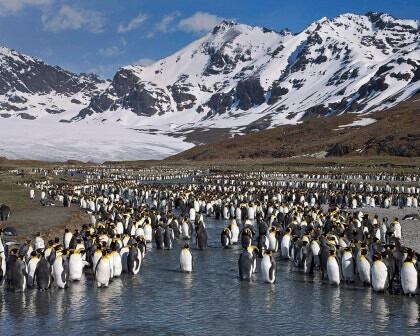
Antarctica - The world's largest iceberg, A-23A, has begun moving again after being trapped in the Weddell Sea gyre for over eight months. This massive iceberg, weighing an estimated one trillion tons, poses a potential threat to the wildlife haven of South Georgia Island in the South Atlantic Ocean.
According to a report by the Washington Post, A-23A is currently drifting at a speed of approximately 1 kilometer per hour. Scientists predict that it could reach the continental shelf of South Georgia Island in about two weeks. The iceberg's movement could disrupt the migration routes of marine animals and potentially block access to their feeding grounds, raising concerns among researchers.
Andrew Meijers, an oceanographer, expressed worries about the impact on wildlife, particularly penguins and seals, which rely on the abundant food sources around South Georgia Island. The island is a crucial breeding and foraging ground for various marine species.
However, the British Antarctic Survey (BAS) suggests that A-23A might break apart and melt due to warmer ocean currents before reaching the island. While this could reduce the direct impact on wildlife, it could also create thousands of smaller ice fragments, posing navigational challenges for fishing vessels.
Currently, A-23A is facing waves of up to 6 meters high and winds of around 70 kilometers per hour, which could accelerate its disintegration. Due to the numerous variables involved, predicting the precise path and potential impact of the iceberg remains challenging.
Scientists are closely monitoring the situation and remain cautious about the potential consequences for the fragile ecosystem of South Georgia Island.
[Copyright (c) Global Economic Times. All Rights Reserved.]






























